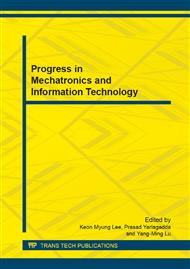p.141
p.150
p.155
p.159
p.167
p.171
p.175
p.182
p.187
A Switch On/Off Relaying Scheme in TDMB Cooperative System
Abstract:
Terrestrial Digital Multimedia Broadcasting (TDMB) is one popular broadcasting standard that enable digital television transmissions to hand held receivers and cooperative system take advantage of the broadcast nature of wireless channels, uses relay stations as virtual antennas. Relay stations are an attractive solution to penetrate the wireless system with lower transmitting power at the Base station. In this paper, we presented a scheme can switch on/off the power weighting ratio between Base station and Relay station in TDMB cooperative system. It will control the active relays in different channel propagations effectively.
Info:
Periodical:
Pages:
167-170
Citation:
Online since:
November 2013
Authors:
Keywords:
Price:
Сopyright:
© 2014 Trans Tech Publications Ltd. All Rights Reserved
Share:
Citation:


